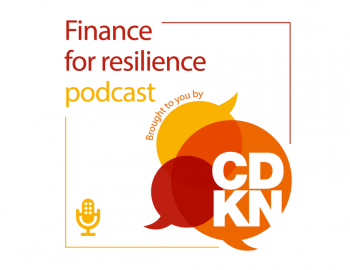Guide: The IPCC’s Special Report on the Ocean and Cryosphere in a Changing Climate: What’s in it for Latin America?
Guide: The IPCC’s Special Report on the Ocean and Cryosphere in a Changing Climate: What’s in it for Latin America?
The Intergovernmental Panel on Climate Change (IPCC) published its Special Report on the Ocean and Cryosphere in a Changing Climate in September 2019. The ‘cryosphere’ refers to the frozen parts of the Earth, including snow, glaciers, ice sheets and ice shelves, icebergs and sea ice, ice on lakes and rivers as well as permafrost and seasonally frozen ground.
The Special Report was a response to proposals from governments and observer organisations to the IPCC. For its preparation, more than 100 scientists from more than 30 countries assessed “the latest scientific knowledge about the physical science basis and impacts of climate change on ocean, coastal, polar and mountain ecosystems, and the human communities that depend on them”[IPCC factsheet]. Communities’ vulnerabilities and adaptation capacities and the options for achieving climate-resilient development pathways were also assessed. The Special Report’s findings are of great importance to readers in Latin America and across the world.
As described by the IPCC: “All people on Earth depend directly or indirectly on the ocean and cryosphere. Human communities in close connection with coastal environments, small islands (including Small Island Developing States, SIDS), polar areas and high mountains are particularly exposed to ocean and cryosphere change, such as sea level rise, extreme sea level and shrinking cryosphere. Other communities further from the coast are also exposed to changes in the ocean, such as through extreme weather events. The low-lying coastal zone is currently home to around 680 million people, projected to reach more than one billion by 2050. Around 670 million people live in high mountain regions.”
Now CDKN – with ODI, SouthSouthNorth and Fundacion Futuro Latinamericano – has launched a new publication: The IPCC’s Special Report on the Ocean and Cryosphere in a Changing Climate: What’s in it for Latin America?
The IPCC’s own Summary for Policy-Makers focuses principally on global issues and trends. This report distils the richest material available on Latin America from the more than 700 pages of the Special Report.
The CDKN publication also includes supplementary material from recently published research that extends and explains the points made in the IPCC’s Special Report. This guide responds to widespread demand among CDKN’s Latin American partner networks for region-specific information.
Some of the IPCC’s key messages, which are explored in the CDKN guide include:
- Climate change driven by human activity is changing the temperature and chemistry of the oceans.
- These changes harm marine life and people who depend on it.
- Sea level rise and other climate hazards increasingly affect Latin America.
- The frozen lands in the high mountains of Latin America are changing, with implications for society.
- The best way to limit changes in the oceans and cryosphere is to mitigate climate change.
- Early action reduces climate risks and costs less than dealing with future damages.
- Future-proofing coastal development will be essential.
- Environmental governance and management must join up across scales and address social issues.
- Communications, education and capacity building are critical.
The publication is not an official IPCC publication, as it has not been through the comprehensive governmental approval process that IPCC endorsement requires. However, CDKN’s guide has been through a robust review process by internal and external experts.



